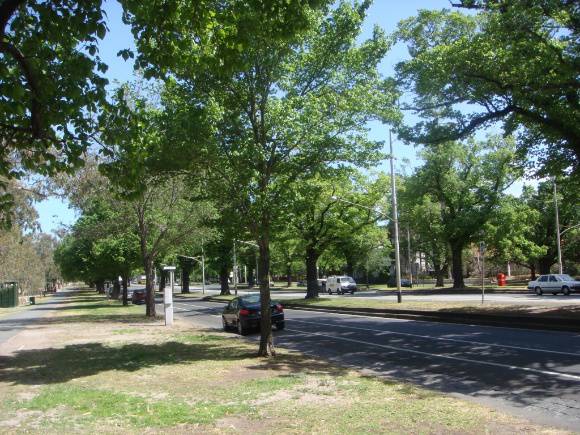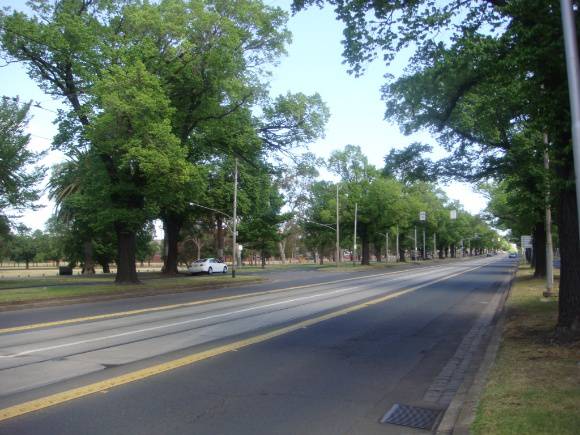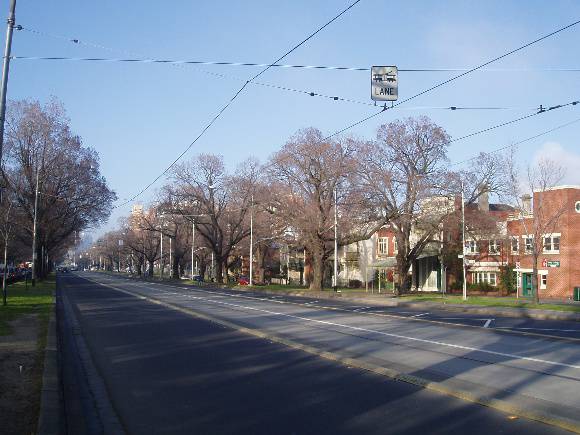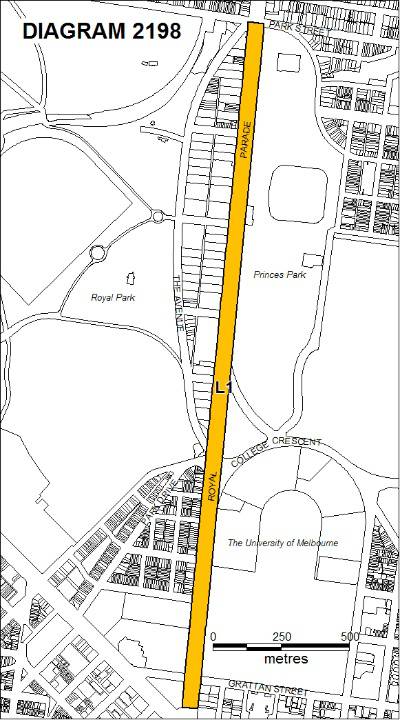| Back to search results » | Back to search page » |
|
ROYAL PARADE
LocationROYAL PARADE PARKVILLE AND ROYAL PARADE CARLTON NORTH AND ELIZABETH STREET MELBOURNE, MELBOURNE CITY
File NumberPL-HE/03/1285LevelRegistered |
|
Statement of Significance
What is significant Royal Parade, the boulevard leading north out of Melbourne, runs between Park Street and Grattan Street in Parkville. A small section of Elizabeth Street from Grattan Street to the roundabout at Flemington Road is included as it completes the boulevard. The full width of carriageway and footpaths, comprising three roadway sections separated by four plantations with wide footpaths on either side make up the boulevard. The roadway accommodates a wide, two-way road and central two-way tramway with one-way service roads on either side. The two inner plantations comprise concrete-curbed, grassed medians planted with mature elms and two outer plantations consist of lines of mature elms planted in 1913 in the grass verges between the footpaths and road. The predominant species is English Elm (Ulmus procera) with approximately four hundred trees contributing to the park-like setting.
How is it significant Royal Parade is of historical, aesthetic and social significance to the state of Victoria. Why is it significant Royal Parade is historically significant as "the road to Sydney" from the mid-nineteenth century and as Melbourne's traditional entrance from the north, re-emphasised in the early twentieth century by the introduction of the multiple elm avenue planted in 1913. It is also historically significant as the multiple avenues demonstrate technical developments in the planning movement world-wide that led to the separation of fast and slow traffic, and different traffic types (motor vehicles and trams) by plantations that were both functional and beautiful. Royal Parade is aesthetically significant as one of Victoria's finest boulevards. As Melbourne's main route to Sydney and northern Victoria, it was re-created in the early twentieth century as a major example of 'city beautiful' planning fashionable at the time. This was characterised by the multi-lane layout and the introduction of the four lines of English Elms. The profile, scale and seasonal change of the deciduous, multiple English Elm avenues provide shade in summer, autumn colour and sunlight penetration in winter.
Group
Landscape - Natural
Category
Other - Landscape - Natural







